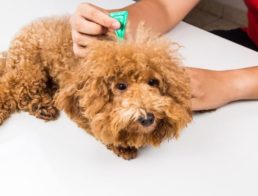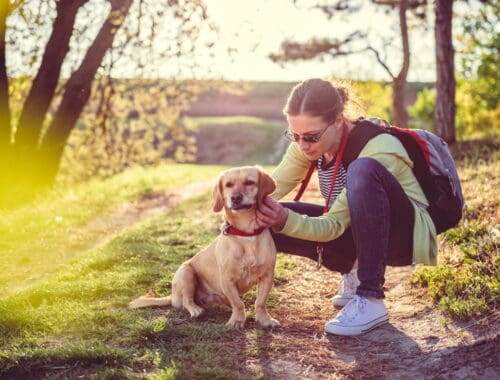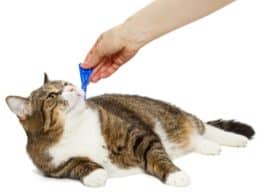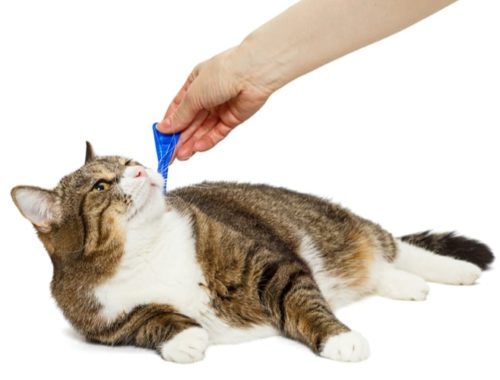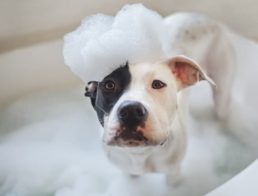Controlling flea infestations is often an ongoing struggle for pet owners. Fleas are typically found in wooded, shady areas. If you live in that type of environment, fleas are a problem you’re likely to encounter. For a lot of families, the best part of cold weather is the natural decrease in the outdoor flea population. For people living in most climates, flea prevention is a must for at least a portion of the year (during the warmer seasons). Cats and dogs will need species-specific collars, so make sure you’re buying the appropriate preventative for your pet.
If the chemicals in collars bother you, don’t worry – you have options. Natural alternatives do exist, and while none are as hands-off as a flea collar, you may want to check them out at PetMD.
Types Of Flea Collars
High-Frequency Collars: High-frequency flea collars prevent flea infestations by emitting an ultra sonic wave that repels fleas from your pet. There are no chemicals or gases emitted from this collar, so you won’t have to worry about poisons coming into contact with your pet or your family. That’s a pretty important plus when you’re weighing your family’s safety. But the con list is pretty significant as well. These collars will not kill fleas, only repel them, and they get mixed feedback on effectiveness. They’re also substantially more expensive. 
Gas-Based Collar: This type of collar emits gas that is not absorbed by your pet and kills the fleas that come in contact on the spot. The advantage to this is that the gas emitted won’t be absorbed by your pet and is, therefore, less dangerous to him. They do repel and kill fleas, but only in a local area, close to the collar. The best part of this, though, is that you can remove it and replace when you know you’ll be in a flea-likely area. So take it off while you’re in your home and put it back on when you’re taking your pooch on a walk.
Absorption-Based Collar: This is by far the most common type of flea collar and is likely what comes to mind when you think of one. These collars, such as the Bayer Animal Health Seresto Flea and Tick Collar (see our full review of the Seresto Flea Collar here), contain insecticides that will be absorbed by your animal and evenly distributed throughout his body preventing and killing fleas all over him. The insecticides can be dangerous, so you’ll need to keep a closer eye on your dog and be more careful with handling them, but absorption-based flea collars are, by far, the most effective at killing and repelling fleas.
Ingredients You May Want To Avoid
One common ingredient that still sometimes appears in flea collars is Tetrachlorvinphos (TCVP), a nerve-damaging chemical that can be very dangerous to your pet. Steer clear of any flea collars containing TCVP.
Another ingredient you might find in your collar is Propoxur, which has human carcinogenic properties, and you may want to avoid it in your pet’s flea collars.
Permethrin collars are potentially harmful to cats, so for your kitty, you’ll want to avoid the collars that contain it. Also, some fleas can develop a tolerance to it, which makes it less effective over time.
Warnings For Flea Collar Use
You should always keep in mind most collars do have chemicals on them. That means you’ll have to always wash your hands after you handle the collar; even if you’re just petting your furry friend. You should also be careful if you have children – you’ll need to keep toddlers away and instill the importance of washing to older children.
You should also be aware that while several collars are water-resistant, they are not typically waterproof. So you’ll want to remove for baths or swimming – but won’t need to worry about a bit of rain.
Tips for Using Flea Collars
You’ll want to replace your flea collar as instructed on the box. This varies for each brand and style, but many common and popular brands typically last for about six months.
Airing out your flea collar a few days before use is also a good idea to give the collar a chance to rid itself of any overpowering smell, and after a few days, you’ll find the collar much more tolerable to use.
Fit it properly so that it is snug, but not tight. It’s important that it fits just right so that your pet cannot bite or chew it, but it’s loose enough not to choke him.
Make sure you keep an eye on your pet for any adverse reactions. Every pet is unique so even chemicals that aren’t supposed to bother him, can potentially. Monitor him closely at first, especially to notice any lethargy or sickness.
Whether a flea collar for your dog or cat is right for you will depend on your specific needs and situation. Your animal may benefit best from this type of flea prevention. If you decide to go with a collar, make sure you’re checking out the ingredient list and buying only from reputable sources.





